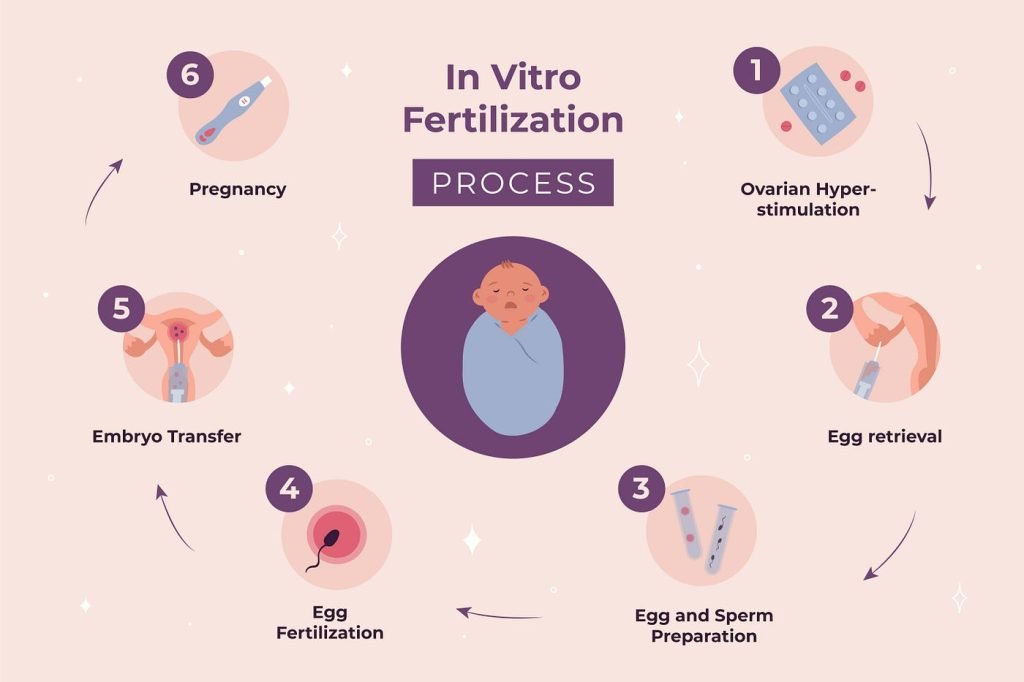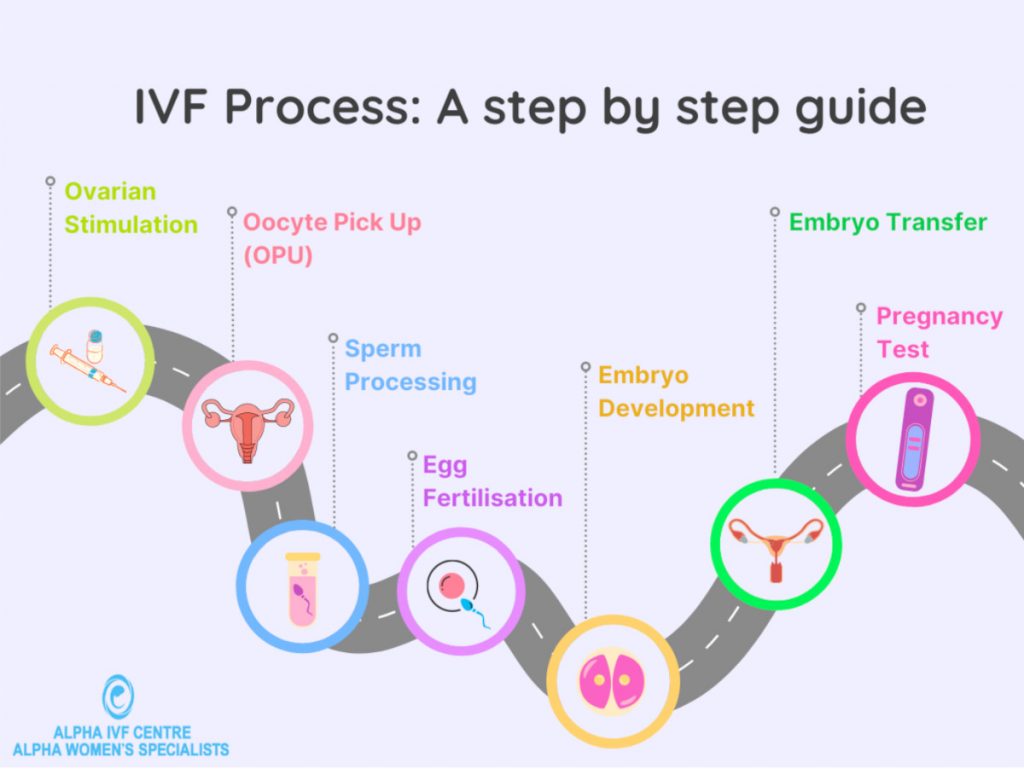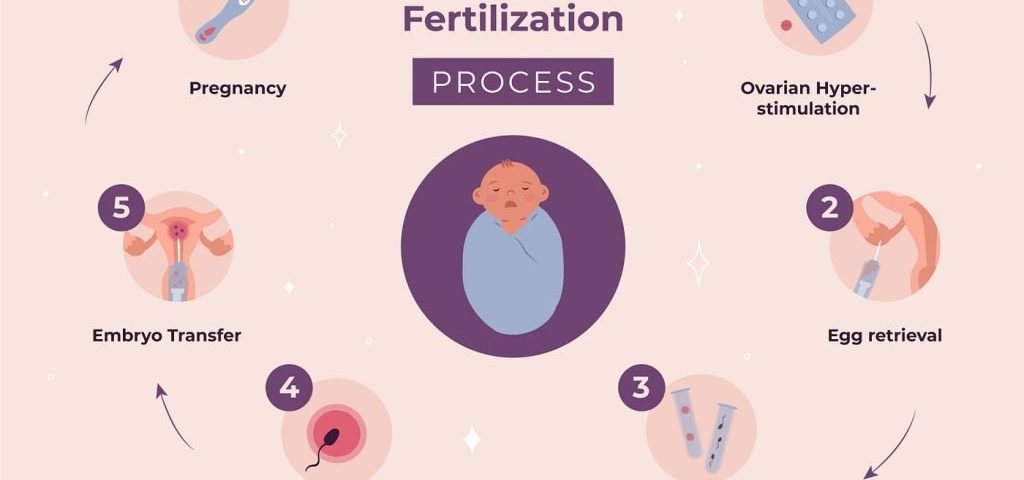Who Said Ban IVF Treatment? Uncovering the Debate, the People, and the Untold Stories
April 3, 2025The IVF Timeline: Your Step-by-Step Guide to the Journey
So, you’re thinking about in vitro fertilization (IVF), huh? Maybe you’ve been trying to start a family for a while, or perhaps you’re just curious about how it all works. Either way, you’re in the right place! IVF is like a rollercoaster—full of ups, downs, and unexpected turns—but it’s also a journey that’s helped millions of people become parents. Today, we’re diving deep into the IVF timeline, breaking it down step by step, and sprinkling in some lesser-known details that’ll make you feel like an insider. From the emotional rollercoaster to the latest research, we’ve got you covered with practical tips, fun facts, and a peek into what real people go through.
Let’s get started!
What Is IVF, Anyway?
IVF stands for in vitro fertilization, which is just a fancy way of saying “fertilization in a lab.” Picture this: instead of an egg and sperm meeting up inside your body like they would in a typical pregnancy, doctors take them out, mix them together in a petri dish, and then put the resulting embryo back into the uterus. Cool, right? It’s been around since 1978 when the first “test-tube baby,” Louise Brown, was born in England. Since then, over 10 million babies have come into the world thanks to IVF.
But here’s the thing—it’s not just for couples who can’t conceive naturally. Single folks, same-sex couples, and even people who want to freeze their eggs for later use it too. It’s like a superpower for anyone dreaming of parenthood!

The IVF Timeline: How Long Does It Really Take?
The IVF timeline can feel like a mystery if you’re new to it. One cycle—meaning one full round of treatment—usually takes about 4 to 6 weeks from start to finish. But here’s a secret: it’s not a one-size-fits-all deal. Your age, health, and even your doctor’s approach can stretch or shrink that timeline. Let’s break it down into bite-sized chunks so you know exactly what to expect.
Step 1: Getting Ready (1-4 Weeks Before the Cycle Starts)
Before the real action begins, there’s some prep work. Think of this as the warm-up before the big game.
- What Happens? Your doctor might put you on birth control pills or estrogen to sync up your menstrual cycle. This helps them control when your ovaries start making eggs. You’ll also get blood tests and ultrasounds to check your hormone levels and ovarian health.
- How Long? About 1-4 weeks, depending on your natural cycle and the clinic’s plan.
- The Insider Scoop: Some folks secretly love this part because birth control can make periods lighter and more predictable—almost like a mini-vacation from cramps!
- Practical Tip: Start a journal. Jot down how you feel, what you eat, and any questions for your doctor. It’ll help you stay on top of things when the process gets busy.
Did You Know? A 2022 study found that syncing cycles with birth control can boost egg quality in some women over 35. Pretty neat, huh?
Step 2: Ovarian Stimulation (About 10-14 Days)
Now it’s time to wake up those ovaries! This is where the magic starts.
- What Happens? You’ll inject fertility drugs (like follicle-stimulating hormone, or FSH) every day to trick your ovaries into producing multiple eggs instead of just one. Normally, your body picks one “winner” egg each month, but IVF needs a team of champs. You’ll visit the clinic every few days for ultrasounds and blood tests to see how those eggs are growing.
- How Long? Around 10-14 days, depending on how fast your follicles (the sacs holding the eggs) grow.
- The Emotional Side: Those hormone shots can turn you into a mood-swing machine. One minute you’re laughing at a cat video, the next you’re crying over a burnt toast. It’s totally normal!
- Fun Fact: Some people nickname this phase “egg boot camp” because it’s all about training your ovaries to bulk up.
- Practical Tip: Set a daily alarm for your shots and keep them in the fridge. Oh, and bribe yourself with a treat—like a Netflix binge—after each one. You deserve it!
Expert Insight: “The stimulation phase is like tuning an instrument,” says Dr. Emily Carter, a fertility specialist. “We’re aiming for just the right number of eggs—too few and we miss our shot, too many and it’s risky.”
Step 3: The Trigger Shot (36 Hours Before Egg Retrieval)
This is the big moment before the egg pickup. It’s short but super important.
- What Happens? When your eggs are ready (usually when follicles are 16-20 millimeters), you’ll get a “trigger shot” of human chorionic gonadotropin (hCG). This tells your ovaries, “Release those eggs soon!”
- How Long? The shot happens once, and egg retrieval is scheduled exactly 34-36 hours later. Timing is everything!
- The Quirky Detail: Some people say the trigger shot feels like a rite of passage. They even celebrate it with a little dance or a toast (non-alcoholic, of course).
- Practical Tip: Mark your calendar and double-check the time with your clinic. Missing this window could mean starting over.
Step 4: Egg Retrieval (A 20-30 Minute Procedure)
Time to harvest those eggs! This step sounds intense, but it’s quick.
- What Happens? You’ll be under light sedation (think twilight sleep) while a doctor uses an ultrasound-guided needle to suck the eggs out of your ovaries through your vagina. It’s not as scary as it sounds—most people don’t feel a thing.
- How Long? The procedure takes 20-30 minutes, plus an hour or so to recover.
- The Hidden Truth: You might feel bloated or crampy afterward, like a bad period day. Some folks secretly stock up on heating pads and cozy socks for this part.
- Practical Tip: Bring a friend or partner to drive you home—no heroic solo missions after sedation!
Checklist for Egg Retrieval Day:
✔️ Wear comfy clothes (skip the skinny jeans).
✔️ Pack a snack for after (your stomach will thank you).
❌ Don’t plan anything big—rest is your VIP for the day.
Step 5: Fertilization in the Lab (1-5 Days)
This is where science gets wild—the eggs meet the sperm outside your body!
- What Happens? In the lab, your eggs are mixed with sperm (either your partner’s or a donor’s). There are two ways this can go:
- Conventional Insemination: Sperm and eggs hang out together and figure it out.
- ICSI (Intracytoplasmic Sperm Injection): A scientist picks one sperm and injects it into an egg—perfect for low sperm counts.
The fertilized eggs (now embryos) grow for 3-5 days while experts watch them like hawks.
- How Long? 1-5 days, depending on when the embryos are transferred or frozen.
- The Cool Twist: Some clinics use time-lapse cameras (like an EmbryoScope) to spy on embryos without disturbing them. It’s like a baby reality show!
- Practical Tip: Ask your clinic how many eggs fertilized—it’s a big morale boost to know the numbers.
Did You Know? Only about 50-70% of eggs fertilize successfully, so don’t panic if not every egg makes it.

Step 6: Embryo Transfer (A 15-Minute Moment)
The embryos are ready to move in! This step is quick but feels huge.
- What Happens? A doctor slides a thin tube (catheter) through your cervix and places one or two embryos into your uterus. You’re awake, and it’s usually painless—like a pap smear with higher stakes.
- How Long? About 15 minutes, plus some rest time after.
- The Secret Hobby: Some people bring lucky charms (a photo, a tiny stuffed animal) to the transfer. Others swear by pineapple core—it’s a fertility myth that’s fun to try!
- Practical Tip: Stay calm with deep breaths or a playlist. Your uterus doesn’t care if you’re a little nervous, but you’ll feel better.
Fresh vs. Frozen Transfer:
| Type | What It Means | Pros | Cons |
|---|---|---|---|
| Fresh | Embryos go in 3-5 days after retrieval | Faster process | Less recovery time for you |
| Frozen (FET) | Embryos are frozen, thawed later | Higher success rates | Takes longer overall |

Step 7: The Two-Week Wait (10-14 Days)
Cue the drumroll—this is the nail-biting part where you wait to see if it worked.
- What Happens? After the transfer, you’ll wait 10-14 days before a blood test checks for pregnancy hormones (hCG). It’s called the “two-week wait” (TWW), and it’s a mental marathon.
- How Long? Exactly 10-14 days, depending on your clinic’s schedule.
- The Emotional Ride: You might obsess over every twinge or craving. Is that nausea a sign? Or just last night’s tacos? Spoiler: it’s hard to tell!
- Practical Tip: Distract yourself—binge a show, knit a scarf, or finally organize that closet. Avoid home pregnancy tests—they can lie and mess with your head.
TWW Survival Kit:
✔️ A good book or podcast.
✔️ Herbal tea (caffeine’s a no-no).
❌ Googling “early pregnancy symptoms” 50 times a day—it’s a trap!
How Many Cycles Does It Take?
Here’s a question everyone whispers about: how many tries before IVF works? Truth is, it varies. About 40-50% of women under 35 get pregnant on their first cycle, but success drops with age. If you’re over 40, it might take 2-3 cycles—or more.
- The Stats: A 2023 study showed that after three cycles, 65-70% of couples under 35 had a baby. For those over 40, it’s closer to 20-25%.
- The Real Deal: Some folks hit the jackpot right away; others need a few rounds. It’s not a race—your body’s doing its best.
Expert Insight: “Patience is key,” says Dr. Sarah Lopez, a reproductive endocrinologist. “Each cycle teaches us something new about your body.”
What Affects the IVF Timeline?
The 4-6 week timeline isn’t set in stone. Here’s what can shake it up:
- Your Age: Younger ovaries respond faster and better to meds.
- Health Conditions: Things like PCOS or endometriosis might slow things down or need extra steps.
- Clinic Style: Some doctors push for frozen transfers, adding weeks between cycles.
- Unexpected Hiccups: If your ovaries overreact (a condition called OHSS), you might pause for a month.
Pro Tip: Ask your doctor for a custom timeline upfront. It’s like getting a roadmap for your journey.
The Emotional Side: What No One Tells You
IVF isn’t just needles and lab coats—it’s a feelings fest. Here’s what’s buzzing under the surface:
- Hope vs. Fear: Every step swings between “This could be it!” and “What if it fails?”
- The Waiting Game: The TWW is torture—some people knit, paint, or even talk to their future baby to cope.
- Partner Dynamics: You might lean on each other more, or bicker over tiny things (thanks, hormones!).
Real-Life Story: Jenna, a 32-year-old teacher, said, “I started baking during my TWW—12 dozen cookies later, I had a positive test and a sugar high!”
Practical Tip: Find your “thing”—whether it’s yoga, journaling, or bingeing true crime. It’s your lifeline.
Latest Research: What’s New in IVF?
IVF’s always evolving, and 2025 is bringing some cool updates. Here’s what’s hot:
- AI in Embryo Selection: Clinics are using artificial intelligence to pick the best embryos. A 2024 trial showed a 10% bump in success rates!
- In Vitro Gametogenesis (IVG): Scientists are working on making eggs and sperm from skin cells. It’s not ready yet, but it could change everything for folks with no viable gametes.
- Milder Meds: New protocols with fewer drugs (like IVM) are cutting costs and side effects. Success rates are lower, but it’s a game-changer for some.
Did You Know? A recent study found that eating a Mediterranean diet during IVF boosts success by 15%. Load up on olives and fish!
Practical Tips for Your IVF Journey
Ready to rock this? Here’s your cheat sheet:
- Prep Your Body: Eat well, sleep lots, and cut back on caffeine. Your eggs will thank you.
- Ask Questions: Bug your doctor about success rates, costs, and what-ifs. Knowledge is power.
- Build a Crew: Tell a few friends or join an online group. You’ll need cheerleaders.
- Budget Smart: IVF can cost $15,000+ per cycle in the U.S. Check insurance, grants, or clinics with payment plans.
- Chill Out: Stress doesn’t ruin IVF, but relaxing helps you feel human.
Quick Q&A:
- “Can I exercise during IVF?” Light stuff like walking is fine, but skip the marathon.
- “What if I get OHSS?” Rest, hydrate, and call your doc—it’s rare but manageable.
The Cost Factor: A Peek at Your Wallet
IVF isn’t cheap, and that’s a biggie for a lot of folks. Here’s the breakdown:
- Average Cost: $15,000-$20,000 per cycle in the U.S., including meds.
- Hidden Fees: Extra tests, embryo freezing, or genetic screening can add $5,000+.
- Insurance Hack: Only 19 U.S. states mandate some IVF coverage—check yours!
Money-Saving Tip: Look into “mini-IVF” (fewer meds, lower cost) if you’re a candidate. It’s not for everyone, but it’s worth a chat with your doc.
Success Rates: What Are Your Odds?
Success rates are the golden question. Here’s the scoop based on age:
| Age Group | Live Birth Rate (Per Cycle) |
|---|---|
| Under 35 | 45-50% |
| 35-37 | 35-40% |
| 38-40 | 20-25% |
| Over 40 | 5-15% |
- Boosters: Using donor eggs or freezing embryos can up your chances.
- Reality Check: It’s not a guarantee, but every cycle’s a fresh shot.
Expert Insight: “Age is the biggest player, but don’t count yourself out,” says Dr. Mark Rivera, an IVF veteran. “We’ve seen miracles at every stage.”
What Happens After a Positive Test?
If you get that magical “pregnant” result, congrats! Here’s what’s next:
- Monitoring: Weekly checkups to watch the baby grow.
- Risks: IVF pregnancies have a slightly higher chance of twins or preterm birth—your doc will keep an eye out.
- Celebration: Tell who you want, when you want. Some wait till 12 weeks; others shout it from day one.
Fun Fact: Some parents keep their IVF vials as a memento—talk about a unique baby book entry!
When IVF Doesn’t Work: The Tough Stuff
Not every cycle ends with a baby, and that’s hard. If it doesn’t work:
- Take a Breather: Give yourself time—weeks or months—to heal.
- Regroup: Talk to your doctor about tweaks for next time (new meds, donor options).
- Lean In: Therapy or support groups can be a lifeline.
Real-Life Wisdom: “After two failed cycles, I took a break and painted my house,” says Mia, 38. “Third time was the charm.”
Beyond the Basics: Fun IVF Tidbits
Let’s lighten it up with some quirky IVF trivia:
- Celeb Connection: Stars like Chrissy Teigen and Celine Dion used IVF—proof it’s not just for “regular” folks.
- Petri Dish Parties: Some clinics throw mini-celebrations when embryos form. Cake, anyone?
- The Pineapple Myth: Eating pineapple core after transfer is a fan-favorite ritual (no science, all vibes).
Your IVF Toolkit: Long-Tail Keywords Unlocked
Wondering what people search for? Here’s how this guide hits all the bases:
- IVF process steps: Check—every stage is here!
- IVF success rates by age: Got the numbers covered.
- How long does IVF take?: Timeline’s crystal clear.
- IVF timeline with frozen embryos: Fresh vs. frozen, sorted.
- Tips for IVF two-week wait: Survival kit included!
Let’s Talk: What’s Your IVF Story?
You’ve made it through the IVF timeline deep dive—phew! Now it’s your turn. What’s on your mind? Are you prepping for your first cycle? Waiting out the TWW? Or maybe you’ve got a tip to share? Drop a comment below—I’d love to hear from you. Let’s build a little community right here, cheering each other on.
And hey, if this guide helped, share it with a friend who’s on the same road. IVF’s a big deal, but you’re not alone in it. Here’s to your journey—fingers crossed and good vibes all the way!
